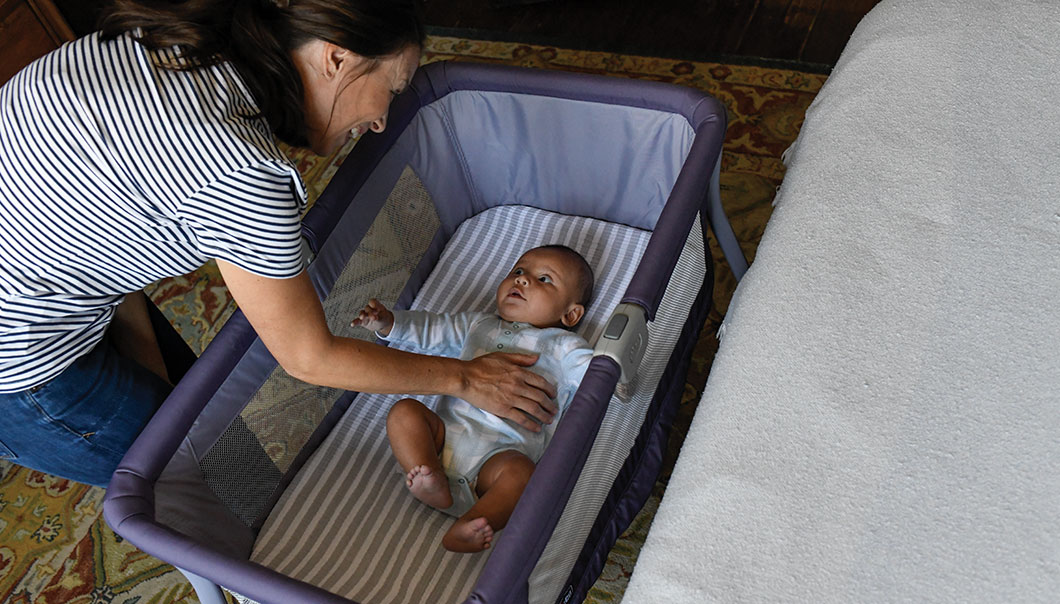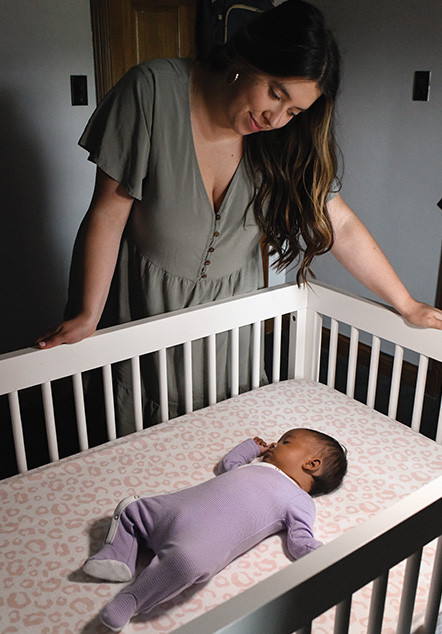Diminye Risk Sendwòm Lanmò Sibit Tibebe (Sudden Infant Death Syndrome, SIDS) ak lòt kòz lanmò tibebe ki gen rapò ak dòmi

Pou diminye risk lanmò ki gen rapò ak dòmi ak SIDS, swiv ABC dòmi an sekirite.
A
Pou kont li
Kenbe objè mou, jwèt, zòrye, dra, lenn, po mouton, oswa pwotèj bèso deyò zòn kote tibebe w la dòmi.
Pa janm mete tibebe a dòmi sou sifas ki mou, tankou sou yon kanape oswa sou yon sofa, zòrye, lenn, po mouton, oswa dra.
B
Sou do
Tibebe yo dòmi pi an sekirite lè yo mete yo plat sou do yo sou yon sifas ki fèm*. Chak tan dòmi konte. Mete tibebe a dòmi sou do li pou kabicha ak lannwit.
*Sifas dòmi fèm yo ka gen ladan bèso, ti bèso moyiz ak pak pou jwe pòtab ki apwouve pa sekirite.
C
nan yon Bèso
Pa sèvi ak yon chèz machin, transpòtè, balanswa, oswa atik ki menm jan an antanke yon kote tibebe a dòmi chak jou.
Aksyon ou yo Fè yon diferans.
Gen anpil bagay ou ka fè pou kenbe tibebe w la an sante ak an sekirite.
- Vizite doktè w regilyèman pandan gwosès la.
- Pa fimen, bwè alkòl, oswa itilize dwòg ilegal pandan gwosès la oswa apre tibebe a fèt. Pa fimen oswa pa kite moun fimen bò kote tibebe w la.
- Abiye tibebe w la ak rad pou dòmi ki lejè. Kenbe chanm lan nan yon tanperati ki konfòtab pou yon granmoun.
- Si w mennen tibebe a nan kabann ou pou l manje, asire w ou mete l nan yon zòn dòmi ki separe lè w fini. Sèvi ak yon bèso, ti bèso moyiz ak pak pou jwe pòtab ki apwouve pa sekirite nan chanm ou akote kote ou dòmi.

Pou jwenn yon klinik tou pre w, rele 800-522-0874 oswa vizite sit wèb nou an nan wic.in.gov. Jwenn plis enfòmasyon sou somèy san danje pou tibebe yo.

Enstitisyon sa a ofri tout moun menm opòtinite.